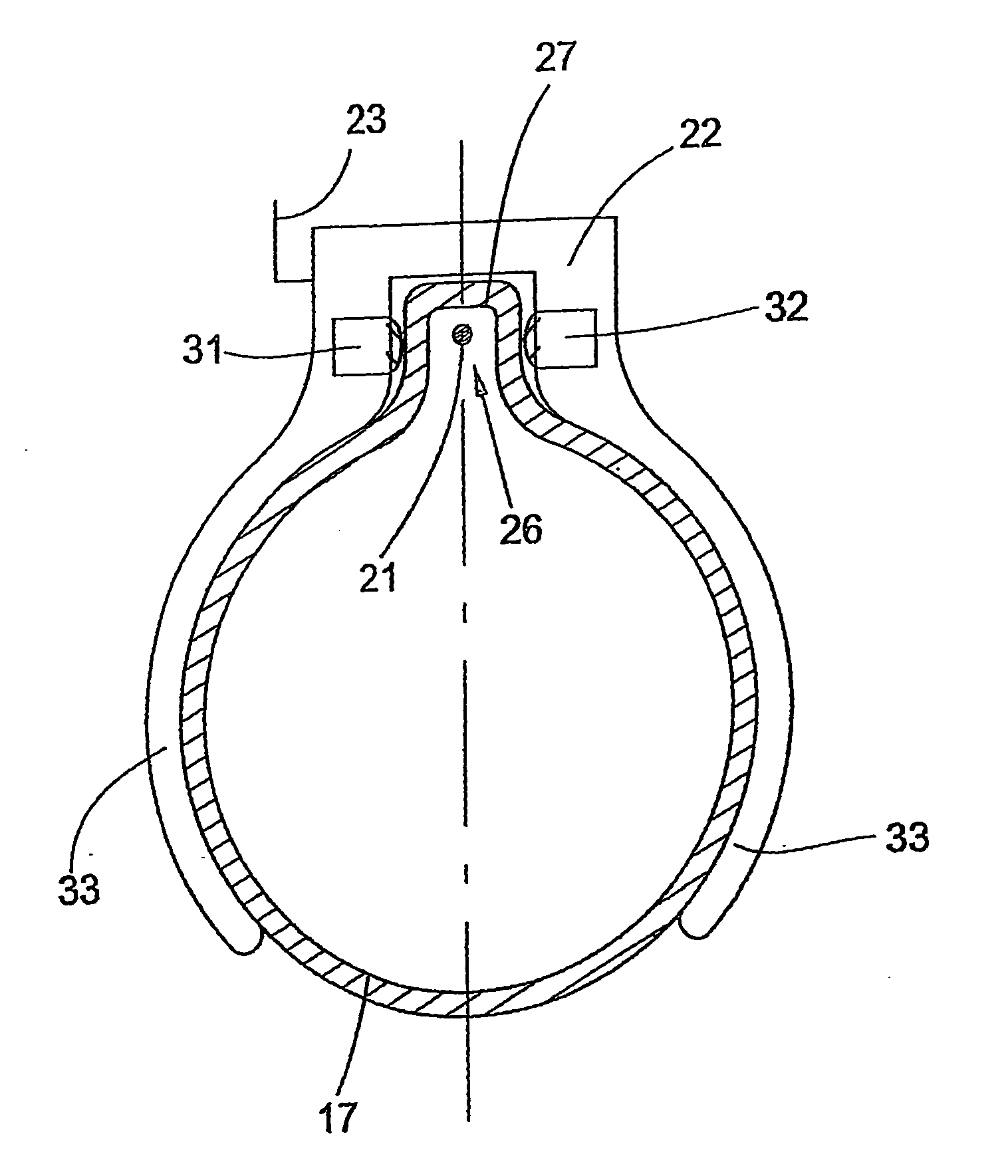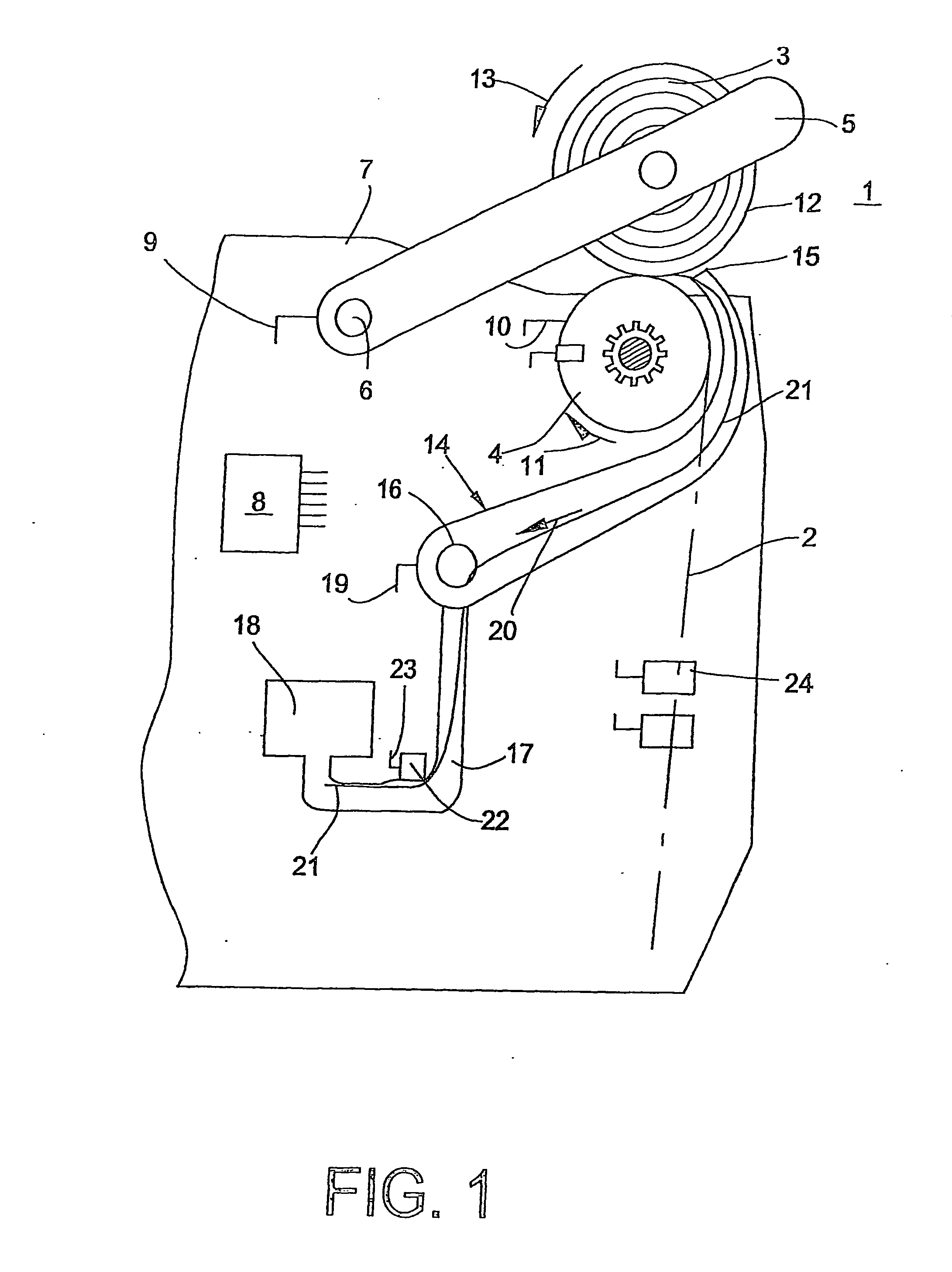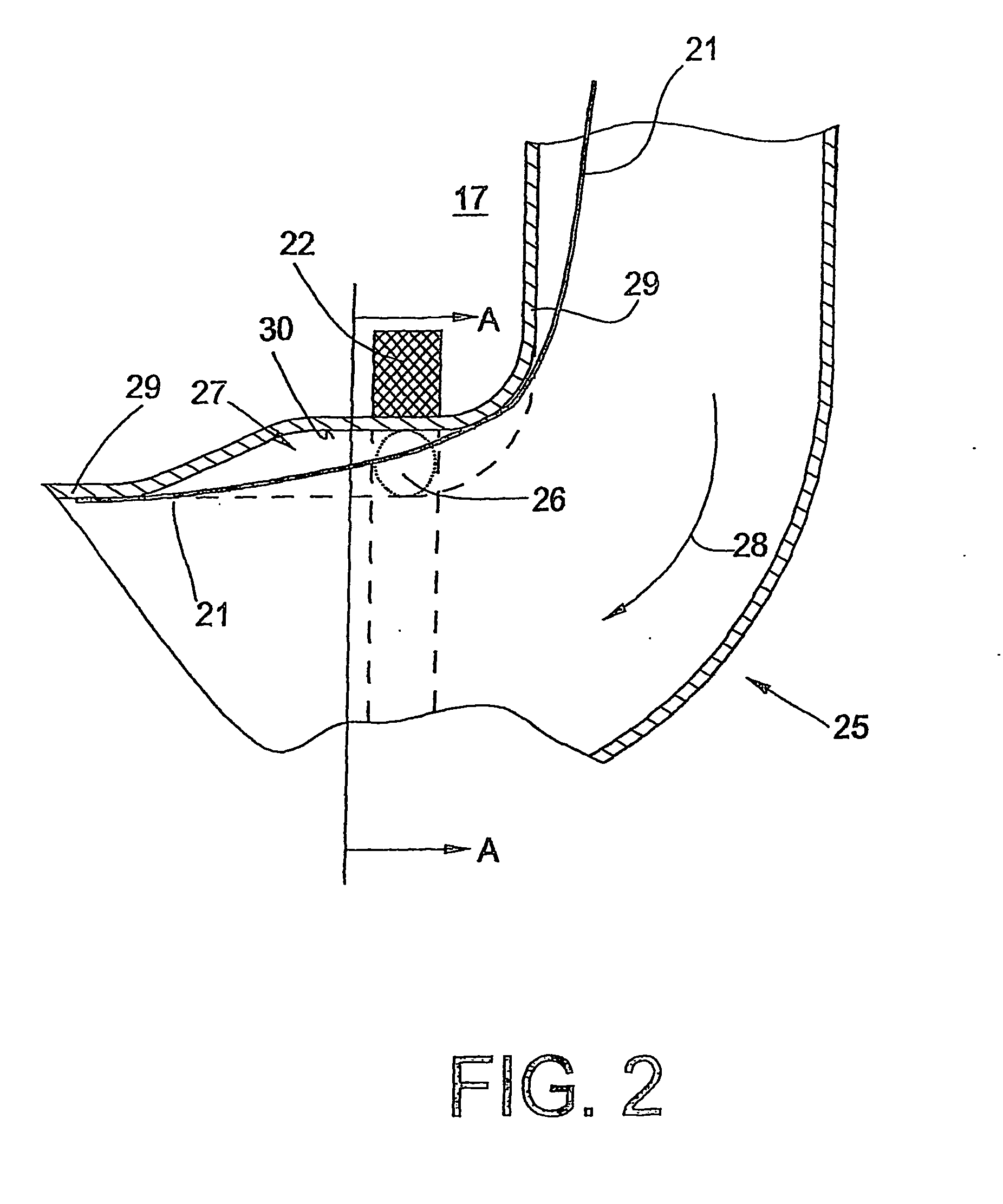Device For Detecting A Thread
a technology for detecting devices and threads, applied in the direction of counting objects on conveyors, instruments, transportation and packaging, etc., can solve the problems of reducing the reliability of measuring, affecting the accuracy of measurement, so as to reduce the disturbance or avoid the disturbance of air flow, reduce the disturbance of measuring, and improve the effect of economic design
- Summary
- Abstract
- Description
- Claims
- Application Information
AI Technical Summary
Benefits of technology
Problems solved by technology
Method used
Image
Examples
Embodiment Construction
[0020]FIG. 1 shows a winding head of a textile machine producing cross-wound bobbins. FIG. 1 shows a situation at the winding head 1, in which the thread run has been interrupted after a thread cut owing to a yarn defect and measures to remove the yarn defect, a so-called clearing, have been introduced. The thread run during operation of the winding head 1 is identified by the dashed line 2. During operation of the winding head 1, the thread is drawn off from a thread source, not shown. The thread source can be a supply bobbin or a spinning device.
[0021]The thread is wound onto a cross-wound bobbin 3 acting as a take-up bobbin. For clearing, the defective thread piece, which has been taken onto the cross-wound bobbin 3, has to be so completely unwound therefrom, that when the thread is cut, the yarn defect is located in the cut-off thread part. The cross-wound bobbin 3, in the view of FIG. 1, has already been lowered again onto the winding roller 4. The cross-wound bobbin 3 is held ...
PUM
 Login to View More
Login to View More Abstract
Description
Claims
Application Information
 Login to View More
Login to View More - R&D
- Intellectual Property
- Life Sciences
- Materials
- Tech Scout
- Unparalleled Data Quality
- Higher Quality Content
- 60% Fewer Hallucinations
Browse by: Latest US Patents, China's latest patents, Technical Efficacy Thesaurus, Application Domain, Technology Topic, Popular Technical Reports.
© 2025 PatSnap. All rights reserved.Legal|Privacy policy|Modern Slavery Act Transparency Statement|Sitemap|About US| Contact US: help@patsnap.com



